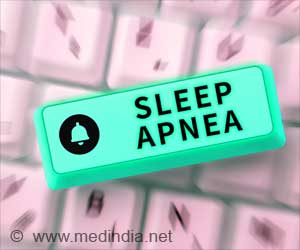The beneficial effects of anti-angiogenesis drugs in the treatment of the deadly brain tumors called glioblastomas appear to result primarily from reduction of edema – the swelling
The beneficial effects of anti-angiogenesis drugs in the treatment of the deadly brain tumors called glioblastomas appear to result primarily from reduction of edema – the swelling of brain tissue – and not from any direct anti-tumor effect, according to a study from Massachusetts General Hospital (MGH) researchers. Their report, to be published in the Journal of Clinical Oncology and receiving early online release, describes how treatment with the experimental drug cediranib reduced edema and improved survival in three mouse models of glioblastoma.
"Our findings suggest that antiangiogenesis therapy can increase patient survival even in the face of persistent tumor growth," says Rakesh K. Jain, PhD, director of the Steele Laboratory in the MGH Department of Radiation Oncology, the study's co-senior author. "In glioblastoma clinical trials, it is important to separate survival analysis from that of tumor response to therapy, since many factors combine to cause patient deaths."Cediranib inhibits the potent angiogenesis factor VEGF, which is known to be abundantly present in glioblastomas and play a critical role in tumor blood vessel formation. A 2007 report from an ongoing clinical trial at the MGH Cancer Center found that the drug temporarily normalized abnormal, leaky blood vessels in glioblastomas that had recurred after surgery, radiation or chemotherapy – reducing edema and apparently the size of the tumors. But the exact mechanism underlying the effects was unclear, since the imaging technology used to track tumor progression could not distinguish between effects on blood vessels and an actual reduction in tumor size.
"We frequently see beneficial effects from drugs in patients without fully understanding the mechanism of action," says A. Gregory Sorensen, MD, of the MGH Radiology Department and Martinos Center for Biomedical Imaging, co-senior author of the report.. "The fact that anti-VEGF agents seem to provide clear benefits in some glioblastoma patients adds to the urgency of understanding the mechanisms that underlie these clinical improvements. We need to learn how to tailor our treatments to benefit even more patients."
The current study was designed to clarify whether cediranib's clinical effects primarily resulted from reduction of edema, which has significant consequences within the brain, or from a direct anti-tumor effect. The researchers implanted fluorescently labeled human or rat glioblastoma cells into the brains of mice and directly observed the tumors and surrounding tissue through transparent windows through the skull. Once tumors began growing, some of the mice received daily doses of cediranib, along with daily measurement of tumor growth, edema and of blood vessel structure and function.
Mice treated with cediranib were found to have significant reductions in the size and permeability of tumor-associated blood vessels, compared with animals that did not receive the drug. Although treatment did not reduce the rate of tumor growth, mice receiving cediranib lived significantly longer than the control animals. Another group of tumor-bearing mice received the steroid drug most commonly used to treat edema, and though those animals also lived longer than controls, the survival benefit was greater for the mice receiving cediranib.
"This is the first paper to show that vascular normalization alone, without chemotherapy, can be effective against some tumors by controlling edema and that this anti-edema effect is better than that of currently used steroids," Jain says. "Unfortunately, these anti-VEGF agents did not slow the tumor growth rate in these models; and since recurrent glioblastomas are highly resistant to currently used chemotherapy drugs, even if vascular normalization increases drug delivery, there may be little or no additional increase in patient survival. We urgently need to find better anti-tumor and anti-angiogenic agents."
Source-Eurekalert
SRM















